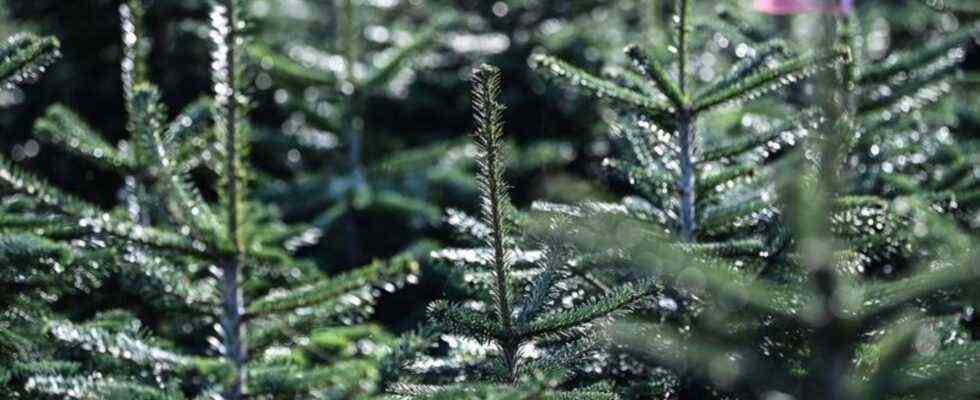trade
Christmas trees as expensive as last year
Nordmann firs stand on the Werderaner Tannenhof’s Christmas tree plantation. Photo: Britta Pedersen / dpa-Zentralbild / dpa
© dpa-infocom GmbH
The Federal Association of Christmas Tree Manufacturers estimates that Christmas trees will cost as much this year as last. But the tastes of buyers are changing.
Despite inflation, delivery bottlenecks and rising transport and personnel costs, the Christmas tree planters assume that the Christmas trees will cost about the same this year as last.
“Basically, we assume that prices will remain constant, but of course there may also be price increases in individual segments,” predicts Saskia Blümel, managing director of the Federal Association of Christmas Tree Manufacturers, two months before Christmas.
According to the association, the particularly popular Nordmann fir will cost between 21 and 27 euros per meter, as it did last season. Blue firs are cheaper at 12 to 16 euros, while spruce trees cost 9 to 12 euros. “Many trees in Germany are marketed directly in family businesses. In contrast to buying from a dealer, for example, there are no higher transport costs,” explains Blümel. The industry spokeswoman also explains the relatively large price range with the different quality of the trees.
Most buyers choose the Nordmann fir
In the opinion of the producers, this is particularly good this year. “There have been few failures this year: it rained enough in the summer and we didn’t have to deal with late frosts in the spring,” says Blümel. Bottlenecks are not expected. According to the information, around 80 percent of people usually choose a Nordmann fir.
Blümel assumes that the demand for trees will remain about the same. In the pandemic year 2020, many new customers were won who would have learned to appreciate the Christmas season in a different way due to contact restrictions and closed restaurants during the pandemic. “We assume that many who bought a tree for the first time last year will be repeat offenders this year,” she says.
From the point of view of Christmas tree producers, it is noticeable that people are increasingly tending towards smaller trees when buying. “That could be due to the fact that there is less and less living space and more single households than there was a few years ago,” speculates Blümel. The average tree size is in the direction of 1.50 to 1.75 meters, earlier more large trees were sold. “It is important for the customer that the tree is slim and takes up little space.”
According to the association, 23 to 25 million Christmas trees are sold in Germany every year. A tree with a size of 1.75 to 2 meters takes about ten years to mature.

